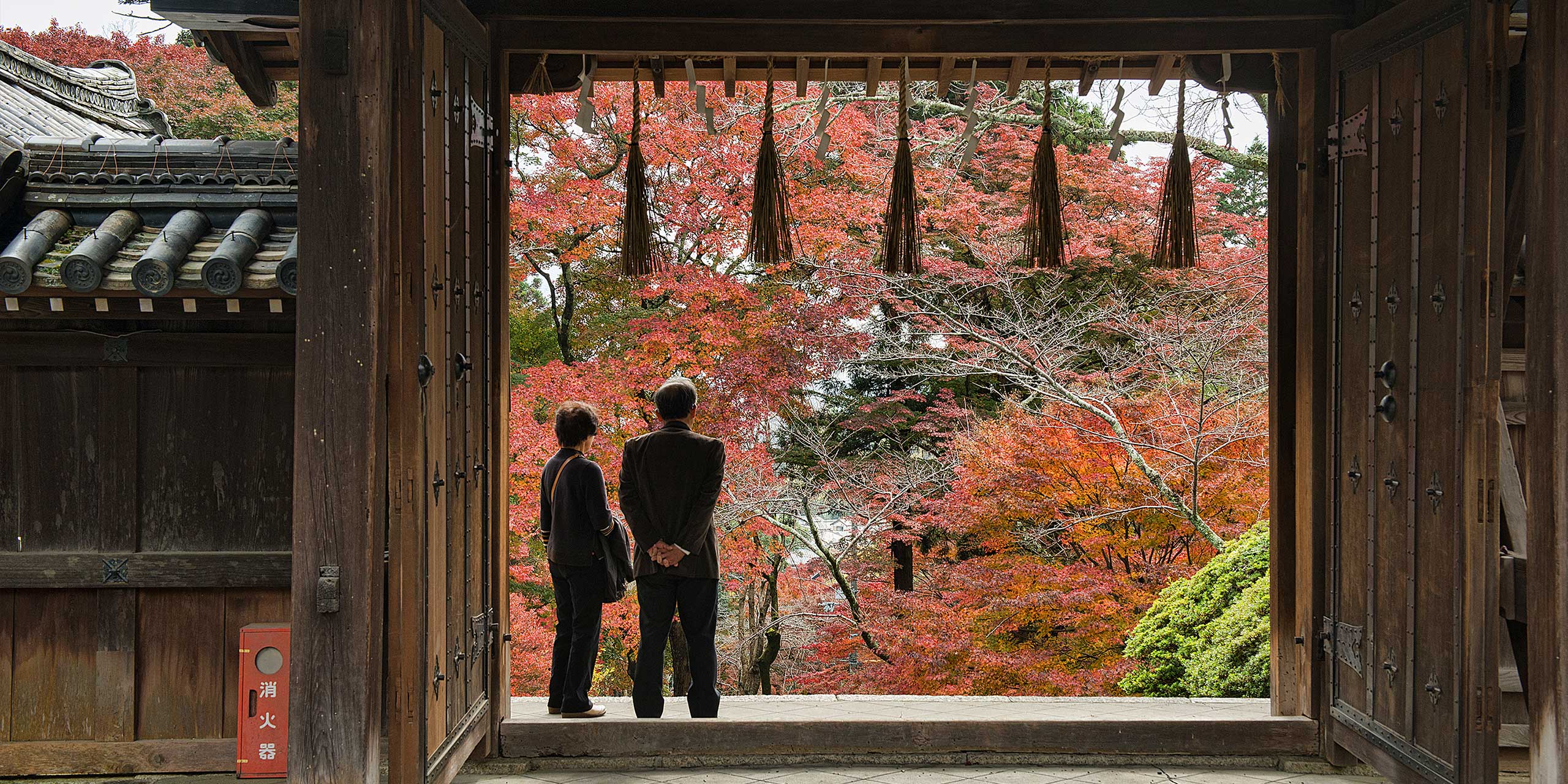
Face it, most travels aren’t going to live up to the hype. That dreamy azure ocean was probably over-saturated in Photoshop, the beachfront resort never told you about the flotsam washing up on that perfect white sand beach. And the idyllic mountain escape is greatly diminished by the Jurassic-sized mosquitoes.
But a trip to Kyoto in autumn, even with all its blemishes, is as close to the divine as you’re ever going to get.
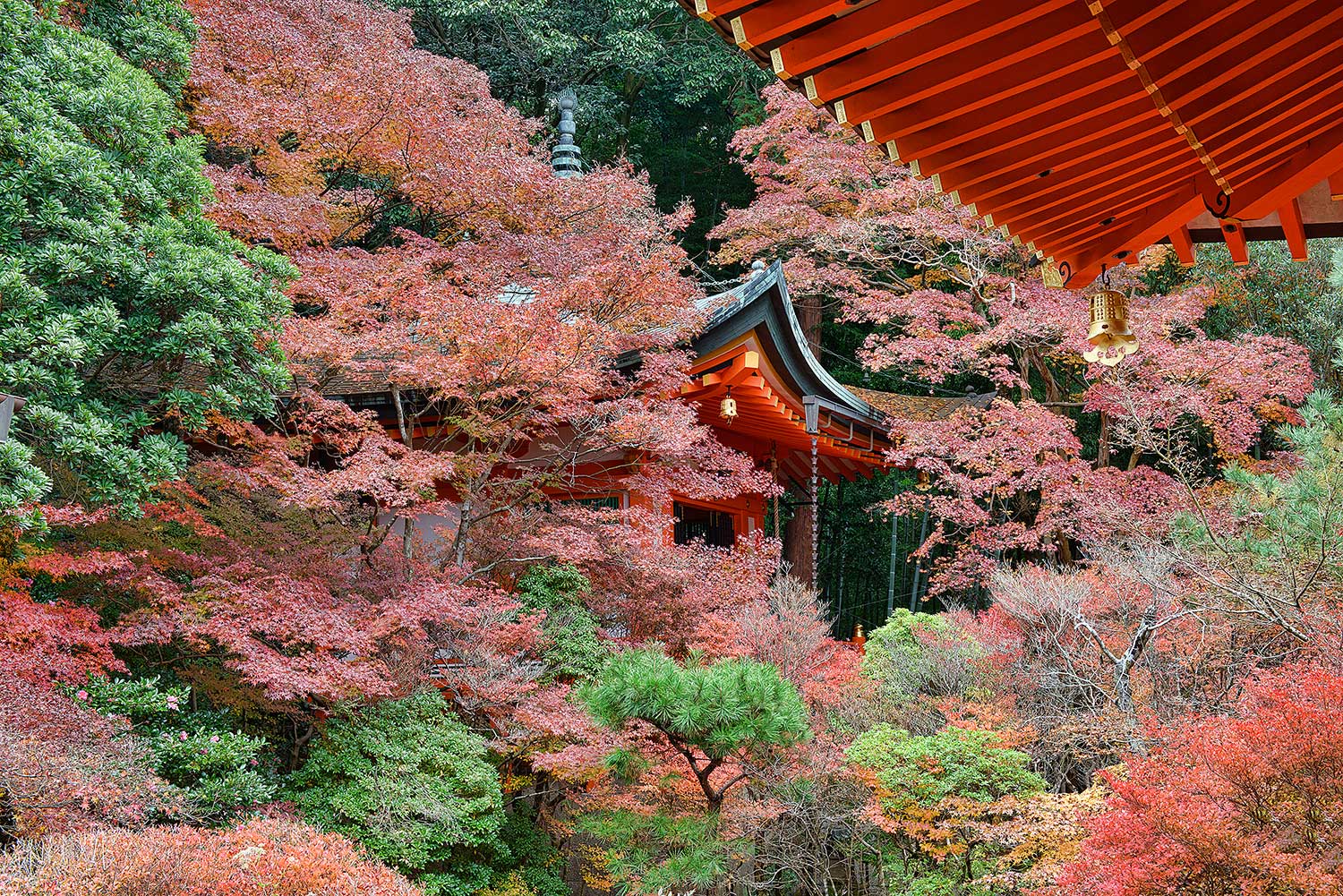
The Japanese have a concept called wabi sabi. It’s hard to define in words, but it means something like the beauty of imperfection, or an appreciation of beauty in all things despite their impermanence. Wabi sabi claims its origins in the story of a sixteenth century Zen monk who was studying tea ceremony.
His master checked out his new apprentice by having him rake the temple garden, which the monk did. But he shook a cherry tree prior to showing off his work, and the fallen sakura flowers carpeted the ground, perhaps “ruining” his work, yet creating a beautiful scene of imperfection.
Perhaps this is why the seasons are celebrated in Japan with such fervor. When I spent several years living in Japan as an English teacher, my students would often tell me, “Did you know that Japan has six seasons (winter, spring, summer, fall, rainy and of course the distinctly different typhoon seasons)?”

While plenty of other places in the world boast temperate climates and the nature that accompanies them, in Japan it’s taken to a whole new level. Hanami (blossom) viewing parties proliferate during the spring, while debate about the best sakura or fall season spots sparks fervent online discussion.
Kyoto is the epicenter of this almost religious experience. In November, the city’s iconic temples and gardens become a living movie set, with ponds, bridges, arches, and seemingly perfectly placed props all illuminated by the incredible display of maple, gingko, and other trees whose leaves turn every shade of red and yellow possible, turning the city into a virtual artist’s palette.
Personally, I found Japanese seasons to be painful. Summers were scorching and humid, winters were bone chilling and wet, and often the most idyllic days of September were destroyed by 3-4 massive typhoon fronts. Yet those fleeting days and weeks of spring and fall when the weather was good, and the trees blossomed or changed color more than made up for it.


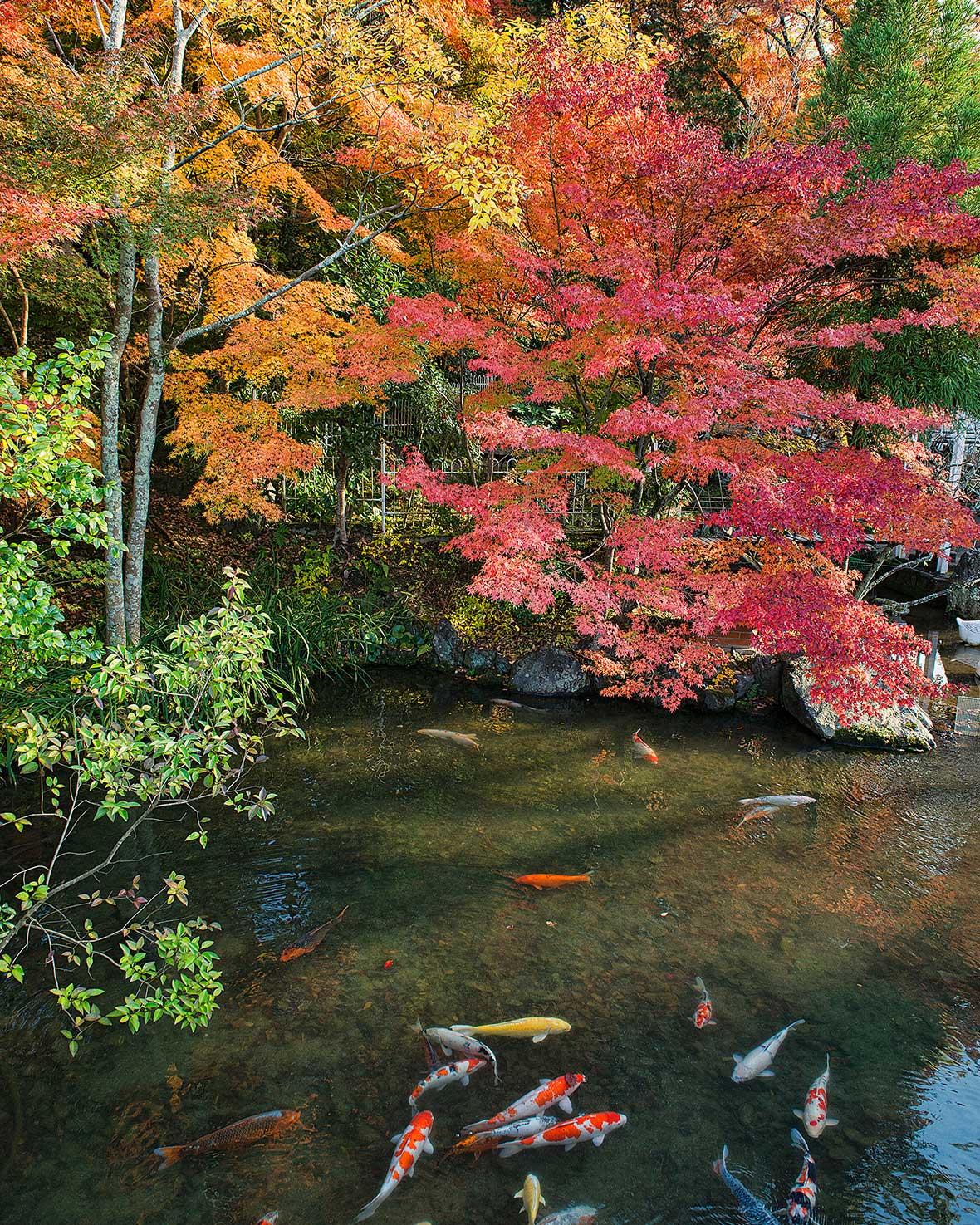

I’d often start my Kyoto mornings with a with a stroll along the Tetsugaku no michi, known in English as the Philosopher’s Path, named for a Kyoto University philosophy professor who took his afternoon contemplative walks here. The path here meandered along a stream, and went from Enkoji Temple up to Ginkaku-ji, the Temple of the Silver Pavilion, both filled with crimson momiji maples. Near the southern end of the path, Eikando Temple was particularly riveting.
This Zen temple featured a traditional garden set around the Hojo Pond, whose solo rock sticking out of the water seemed to float between the red and gold leaves reflecting in the water. Nearby gingko trees dropped their leaves like swarms of mosquitoes as visitors stood spellbound, watching with bated breath as every slight gust of wind shook loose hundreds of golden leaves, which fluttered like butterflies as they descended and joined the already crowded carpet of autumn’s deluge.
The major temples in Kyoto get thronged with tourists both in spring and fall for the cherry blossoms and leaf peeping. I probably would have gotten fed up with the masses, everyone trying to take photos, difficulty parking, and all the other obstacles. But hey, wabi sabi. Everyone here was having the same magical experience, nobody was pushing, shoving, or being noisy, there was just this hushed feeling of communal reverence, we were witnessing nature at its briefest, most impermanent, fleeting absolute best.
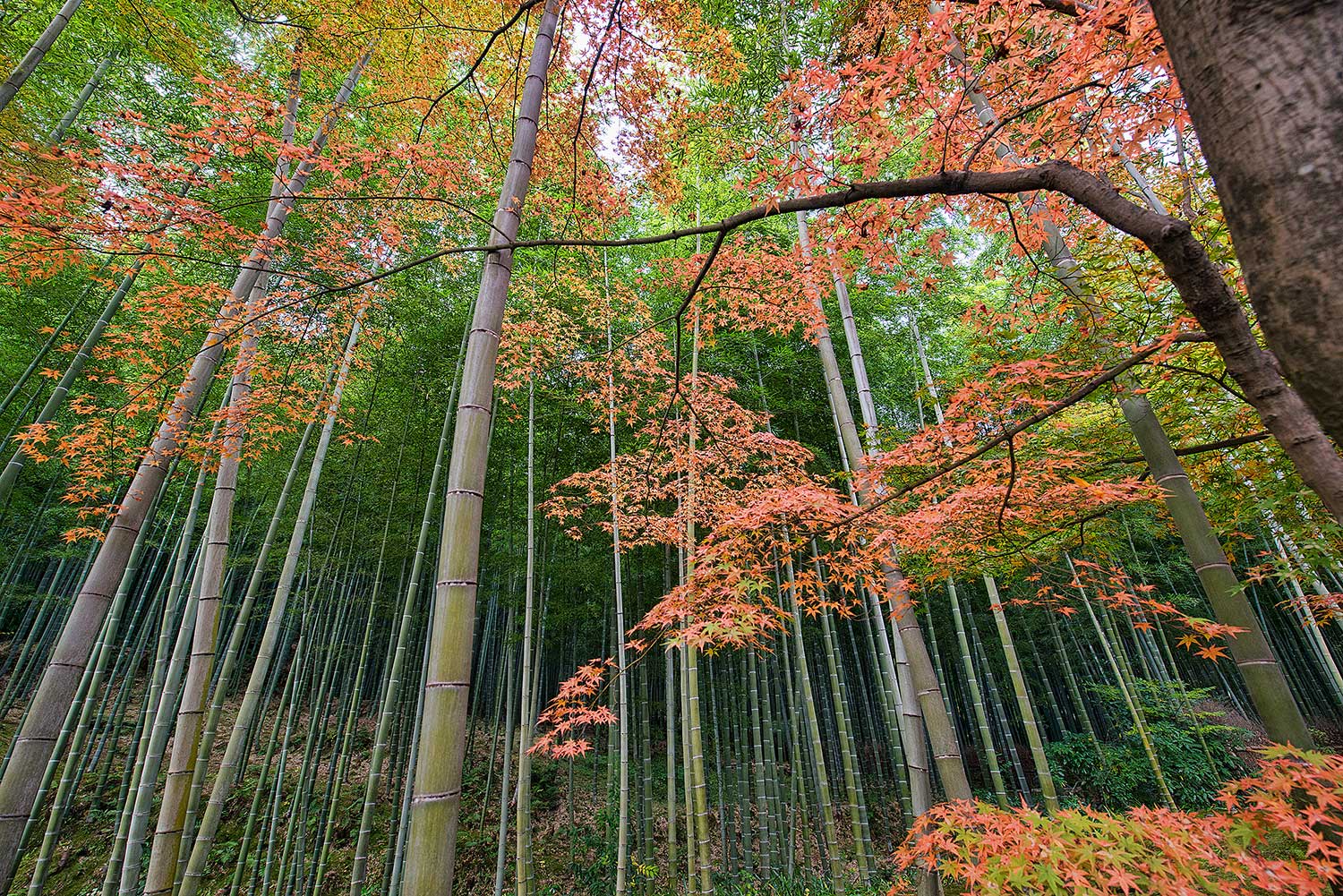
If the crowds did get a bit too intense for me, it was just as easy to find solitude and color not far away. On the city’s east side, a trail passed through Bishamondo, a temple hidden in the forest and not known to most Kyoto visitors. A long sloping path led up to its main steps, which were carpeted with fallen maples.
The few visitors that were there were mostly serious photographers, all of them mesmerized, each of them bent over individual leaves with their cameras, entranced like small children playing for the first time with something they’d never seen before. Fall seemed to bring out the best in everyone in the autumn, nobody rushing, and everyone seemingly doped by the leaves, as if they were some somnambulant narcotics.
Another nearby escape was the Kyoto Trail, a 60-mile set of trails ringing the city. Even domestic tourists didn’t seem to come here, and the section alongside the Hozo River on the east side of the Arashiyama mountains was particularly brilliant, rife with fall colors. Traditional villages with blue-tiled roofs perched above the riverbank and ancient stone arch bridges across it were framed by the blazing foliage, Japan at its most classic and right out of a picture postcard.

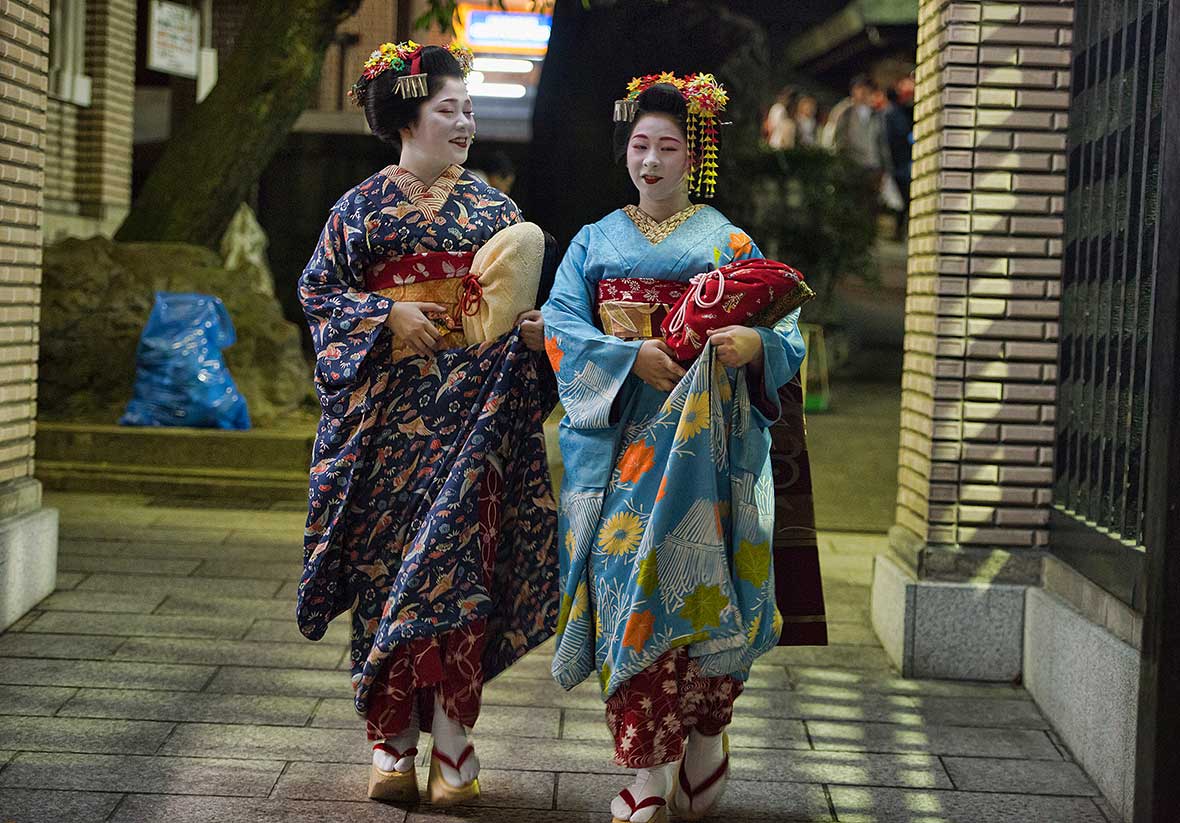
Even in Gion, Kyoto’s geisha district, things had slowed to a crawl. Couples donned traditional Edo period outfits and posed for photoshoots along the fabled bridges, canals, and narrow lanes, while the maiko (apprentice geisha) lingered longer than usual, not trying to outrace the tourists, stopping themselves to take pictures of the latest color changes.
Kiyomizudera is Kyoto’s pièce de resistance. Spread out along the slopes of Mt. Otowa, the UNESCO World Heritage temple was constructed in 778, made from thick cypress boards and 400-year-old zelkova trees, and is famed for not having a single nail used in its entire construction. Named after a pristine waterfall that sits on the temple grounds (kiyomizu means pure water), Kiyomizudera is also noted for its bizarre Edo period tradition, where people leapt off its main terrace, believing that if one were to survive the 50-foot plunge to the ground below, ones’ wishes would come true. 234 jumps occurred during this time, and although 85% of the leapers survived, the practice was banned.

Today Kiyomizudera offers leaf viewing unrivaled, with a sea of maples surrounding the main complex. Thousands of modern-day pilgrims throng to the temple balcony as if going to Woodstock, and at night are treated to the flaming forest below illuminated by light beams set up to enhance the scene by the temple.
Amidst the horde, I jostled to get better position for a few pictures, and was startled to see the woman I usually bought my fish from over at the Nishiki market. Dressed in her finest kimono, she and her daughter were busy taking snaps, but then I caught her eye, and she smiled and bowed politely to me. It struck me that perhaps not too much had changed in Kyoto in the thousands of years since the Zen monk shook the cherry tree, and that the autumn display here served as a euphoric elixir, a potion served up by the dazzling celebration put on by nature.
I knew this would all disappear in a matter of weeks if not days, that life would return to its busy humdrum self, that everyone including me would go back home and back to work, and that the temple grounds would become desolate, both in lack of visitors and in a rather drab pre-winter grey, with no leaves on the trees or color on the grounds. And then, gazing up at the captivating colors surrounding us, I realized that this fact made what I was seeing even more magical.
